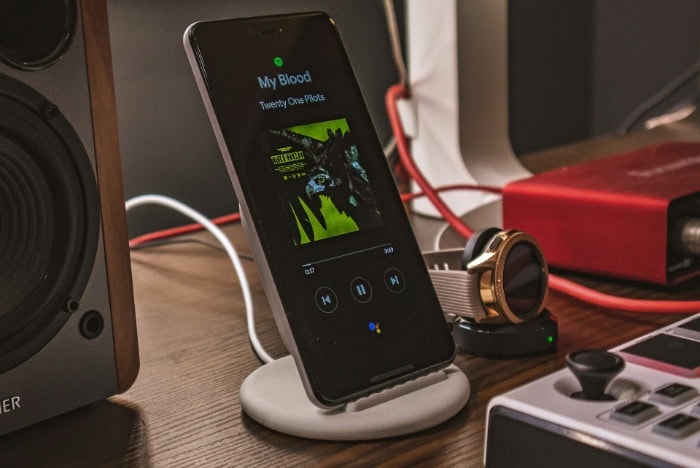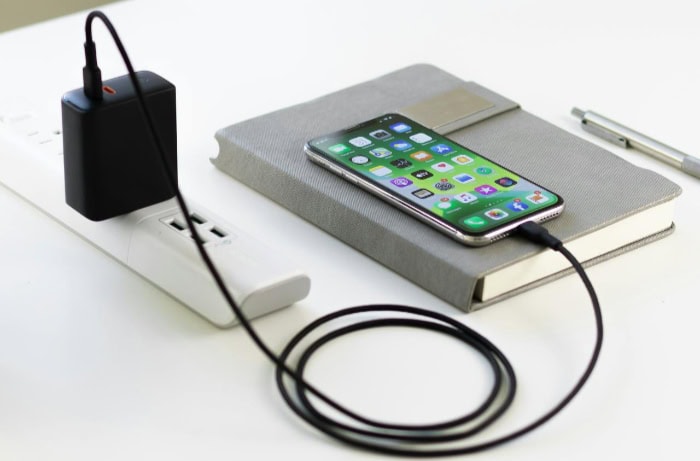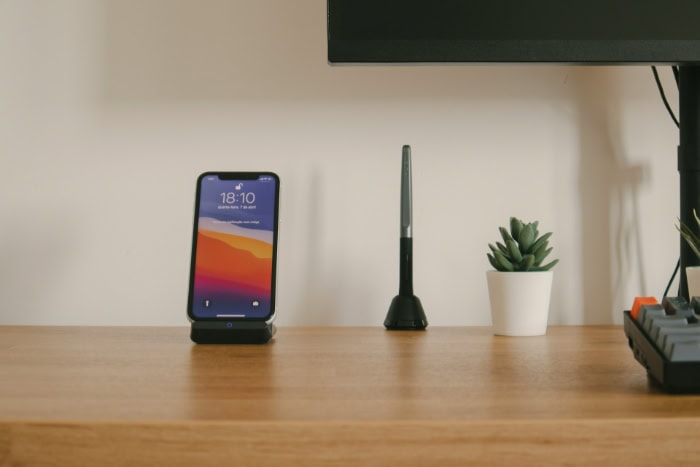Wireless Charging vs. Wired: Which Is Better?

Gone are the days when wired charging was the only option. Today, wireless charging has emerged as a compelling alternative, offering a new level of convenience and flexibility.
However, as with any technological advancement, it's crucial to understand the differences between these two charging methods. Beyond the obvious distinction of wires versus no wires, there are deeper factors to consider when choosing between wireless and wired charging.
From charging speed and efficiency to cost and device compatibility, each method has its own strengths and weaknesses.
Technical Performance
When comparing wireless and wired charging, technical performance is a crucial factor to consider. The two main aspects that define the technical capabilities of these charging methods are charging speed and energy efficiency.
Charging Speed
Charging speed is one of the most noticeable differences between wireless and wired charging. Wired charging typically offers a wider range of power delivery capabilities, ranging from 5W to 100W, depending on the device and charging protocol used.
This means that wired charging can often provide faster charging speeds, especially for larger devices like tablets and laptops.
In contrast, wireless charging is generally limited to power outputs between 5W and 15W, which can result in slower charging times compared to wired methods.
For example, a smartphone with a 4,000mAh battery might take around 1.5 hours to fully charge using a 20W wired charger, while a 10W wireless charger could take up to 3 hours to achieve the same result.
However, it's important to note that charging times can vary depending on factors such as battery capacity, charging technology, and device optimization.
Another factor that affects charging speed in wireless charging is device positioning. For optimal charging efficiency, the device must be properly aligned with the charging coil in the wireless charger.
Misalignment can lead to slower charging speeds or even failure to charge altogether. This is not an issue with wired charging, as the physical connection ensures consistent power delivery.
Energy Efficiency
Energy efficiency is another important consideration when comparing wireless and wired charging. Wired charging typically offers higher power transfer rates and lower energy loss compared to wireless charging.
This is because wired charging involves a direct electrical connection between the charger and the device, minimizing power loss during transmission.
Wireless charging, on the other hand, relies on inductive coupling to transfer power between the charger and the device. This process involves converting electrical energy into magnetic energy and then back into electrical energy, which can result in greater energy loss.
The efficiency of wireless charging can range from 60% to 80%, meaning that a portion of the power is lost as heat during the transfer process.
Heat generation is another aspect of energy efficiency to consider. Wireless charging tends to generate more heat compared to wired charging due to the energy loss during power transfer.
This heat can potentially impact device performance and battery health over time. In contrast, wired charging generates less heat, as the direct electrical connection allows for more efficient power transfer.
Practical Usage

While technical performance is a significant factor in choosing between wireless and wired charging, practical usage considerations also play a crucial role in determining which method best fits your lifestyle and needs.
Daily Convenience
One of the most significant advantages of wireless charging is its convenience in daily use. With wireless charging, you can simply place your device on a charging pad without the need to fumble with cables or worry about finding the right connector.
This can be particularly useful when you're in a hurry or have limited space on your desk or nightstand. However, it's important to note that wireless charging pads still require a power cable to function, so cable management isn't entirely eliminated.
In contrast, wired charging involves dealing with cables, which can sometimes be messy or inconvenient. Cables can become tangled, damaged, or misplaced, adding an extra layer of frustration to the charging process.
However, wired charging does offer the advantage of mobility while charging. With a long enough cable, you can continue to use your device while it's plugged in, which is not always possible with wireless charging pads that require your device to remain stationary.
Another aspect to consider is multi-device charging solutions. Some wireless charging pads offer the ability to charge multiple devices simultaneously, such as a smartphone and smartwatch, which can be convenient for users with multiple devices.
However, these solutions often come at a higher cost compared to wired charging hubs that can accommodate multiple devices using a single power outlet.
Compatibility
Compatibility is another crucial factor to consider when choosing between wireless and wired charging.
While wired charging has been a standard feature on most devices for many years, wireless charging compatibility can vary significantly between manufacturers and device models.
Most modern smartphones support wireless charging, but the specific charging standard and power output can differ. The Qi standard is the most widely adopted wireless charging protocol, supported by major manufacturers like Apple, Samsung, and Google.
However, some devices may use proprietary wireless charging technologies that are not compatible with Qi-certified chargers.
In contrast, wired charging has more universal compatibility across devices and platforms.
The USB Power Delivery (USB-PD) standard has become increasingly popular, offering fast charging capabilities and compatibility with a wide range of devices, including smartphones, tablets, and laptops.
This cross-platform functionality makes it easier to find compatible chargers and cables for your devices.
Cost Analysis

When considering the choice between wireless and wired charging, it's essential to evaluate the financial implications of both options. This cost analysis encompasses not only the initial investment required but also the long-term economic factors that can impact your overall expenses.
Initial Investment
The upfront costs associated with wireless and wired charging can vary significantly. Wireless charging typically requires a higher initial investment compared to wired charging solutions.
A basic wireless charging pad can range from $15 to $50, while more advanced models with features like multiple charging coils or faster charging capabilities can cost upwards of $100.
Additionally, if your device doesn't have built-in wireless charging capabilities, you may need to purchase a wireless charging receiver or case, which can add another $10 to $30 to your expenses.
In contrast, wired charging often has a lower entry cost. Many devices come with a basic wired charger included, and replacement cables are relatively inexpensive, typically ranging from $5 to $20.
However, if you opt for faster charging capabilities or brand-name chargers, the cost can increase to $20 to $50 or more.
It's also worth considering the additional accessories you might need for each charging method. For wireless charging, you may want to invest in charging stands or multi-device charging pads, which can add to your initial costs.
Wired charging might require you to purchase additional cables or adapters, especially if you have devices with different connector types.
Installation considerations can also impact the initial investment. Wireless charging pads generally don't require any special installation, but you may need to reorganize your workspace to accommodate them.
Some users opt for built-in wireless charging solutions, such as furniture with integrated charging pads, which can significantly increase the initial cost.
Wired charging typically doesn't require any special installation, but you might consider investing in cable management solutions to keep your space organized.
Long-term Economics
While the initial investment is important, it's equally crucial to consider the long-term economic factors associated with each charging method. These ongoing costs can accumulate over time and impact the overall value of your chosen charging solution.
Maintenance expenses are generally lower for wireless charging systems. With no moving parts or physical connections, wireless chargers are less prone to wear and tear. However, they may require occasional cleaning to ensure optimal performance.
Wired charging cables, on the other hand, can be subject to more frequent damage due to bending, fraying, or connector wear. This may lead to higher replacement costs over time, especially if you opt for higher-quality cables.
Energy consumption costs are another factor to consider. As mentioned in the technical performance section, wireless charging is generally less energy-efficient than wired charging due to power loss during transmission.
This lower efficiency can translate to slightly higher electricity costs over time. However, the difference in energy consumption between the two methods is typically minimal for individual users and may not significantly impact your overall electricity bill.
Replacement and upgrade factors also play a role in long-term economics. Wireless charging technology is still evolving, with new standards and faster charging capabilities being introduced.
This may prompt you to upgrade your wireless charging equipment more frequently to take advantage of these improvements. Wired charging technology also advances, but the changes are often more gradual and backwards-compatible, potentially reducing the need for frequent upgrades.
Device Longevity

When choosing between wireless and wired charging, it's important to consider how each method may impact the longevity of your devices. Both charging methods can affect the physical components and internal hardware of your devices differently, ultimately influencing their lifespan and performance over time.
Physical Wear
One of the primary concerns with wired charging is the potential for physical wear on the device's charging port. Repeatedly plugging and unplugging the charging cable can lead to port degradation over time.
The constant friction and stress on the port can cause the connectors to become loose, bent, or even broken, potentially rendering the device unable to charge or function properly.
This issue is particularly prevalent in devices with fragile charging ports, such as micro-USB connectors.
In contrast, wireless charging eliminates the need for physical connectors, reducing the risk of port damage. However, wireless charging still involves contact between the device and the charging pad, which can lead to some physical wear.
The repeated placement and removal of the device on the charging pad can cause minor scratches or scuffs on the device's back panel, especially if the charging pad has a rough surface or if debris is present.
Dust and debris can also impact the longevity of both wired and wireless charging components. In wired charging, dust and lint can accumulate inside the device's charging port, potentially interfering with the connection and causing charging issues.
Regular cleaning of the port can help mitigate this problem. With wireless charging, dust and debris on the charging pad or the device's back panel can hinder the charging process and potentially cause minor surface damage over time.
Component Impact
Beyond physical wear, the choice between wireless and wired charging can also have an impact on the internal components of your devices, particularly the battery.
Battery health is a crucial factor in overall device longevity, as a degraded battery can lead to reduced performance, shorter usage times between charges, and eventually, the need for battery replacement or device upgrade.
Some concerns have been raised about the potential impact of wireless charging on battery health. Wireless charging typically generates more heat compared to wired charging due to the inefficiencies in power transmission.
Excessive heat can cause battery degradation over time, potentially shortening the battery's lifespan.
However, modern devices and wireless charging systems are designed with temperature management in mind, using features like automatic shut-off and cooling mechanisms to prevent overheating.
Wired charging, on the other hand, generally produces less heat due to the direct electrical connection. This can potentially lead to better long-term battery health compared to wireless charging.
However, factors such as charging speed and user behavior also play a role. Using high-wattage chargers or leaving devices plugged in for extended periods after reaching full charge can also generate heat and negatively impact battery health.
Conclusion
Wireless and wired charging technologies each offer distinct advantages and challenges. Wired charging provides faster power delivery and greater energy efficiency, while wireless charging offers convenience and reduced physical wear on device ports.
The choice between these methods depends on individual priorities, such as charging speed, ease of use, or device compatibility. Both options have safety measures in place, but users should remain vigilant about proper usage and maintenance.
Cost considerations vary, with wireless charging often requiring a higher initial investment but potentially offering long-term benefits. As technology progresses, both charging methods continue to improve, providing users with more efficient and convenient ways to power their devices.
Weighing the pros and cons of each method allows users to select the charging solution that best fits their lifestyle and needs.


